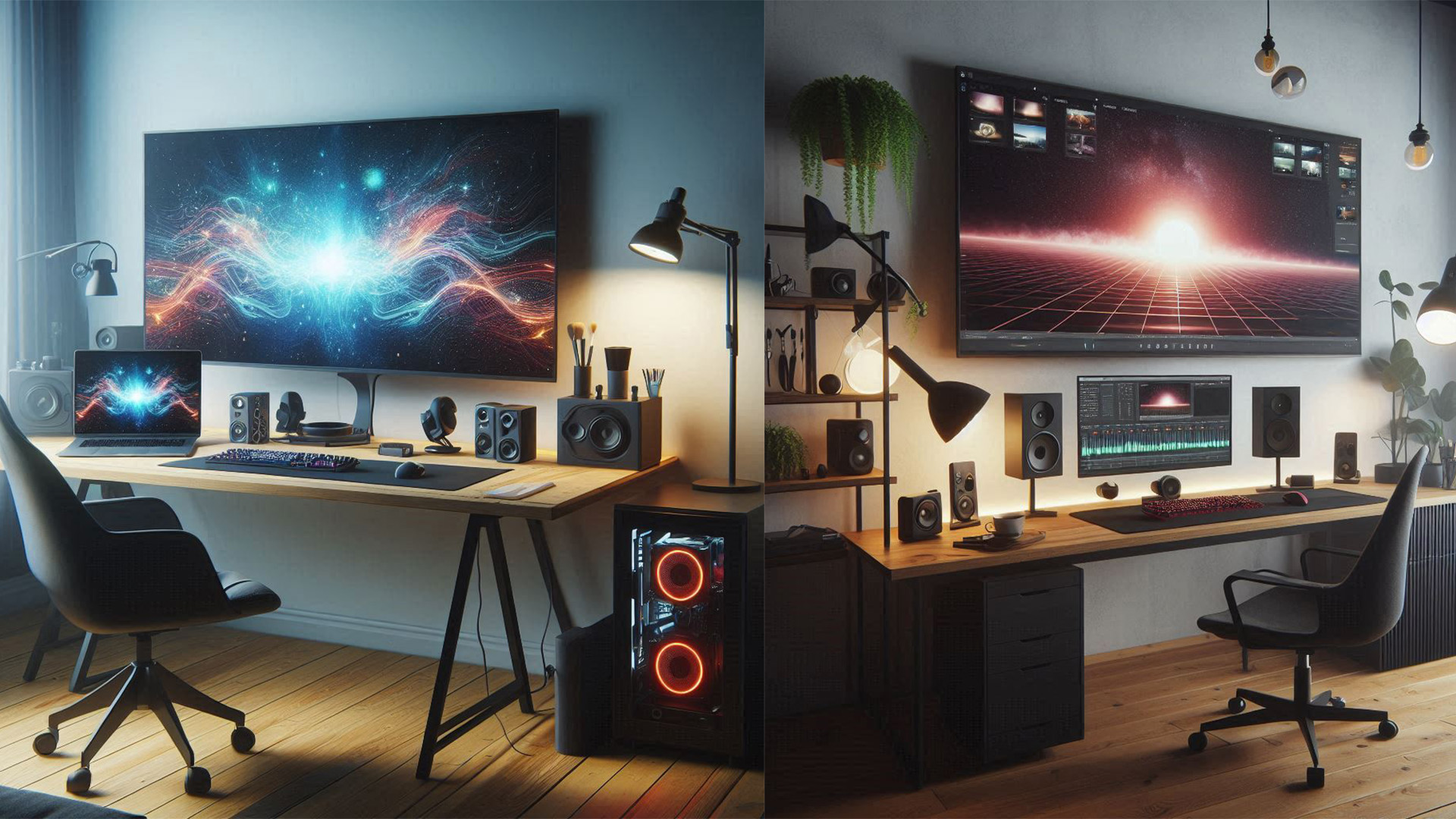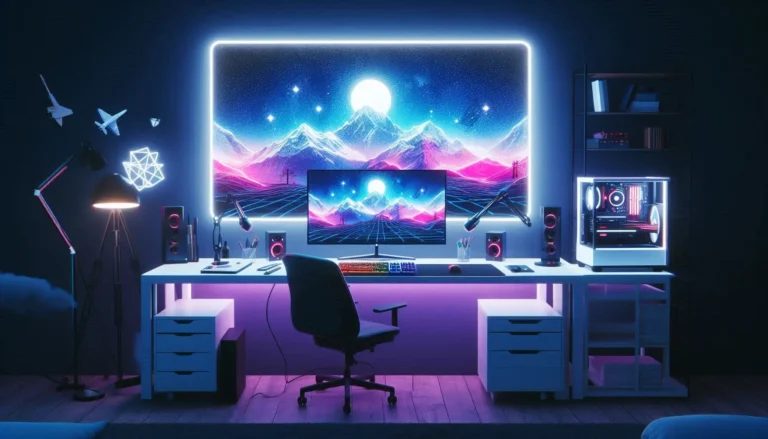Home vs. Professional Video Studio: What’s Right for You?
Home vs. Professional Video Studio: What’s Right for You? “So I Turned My Bedroom Into a Studio…”
Let’s start with the dream. You saw a TikTok about making six figures filming YouTube videos in your bathrobe and thought, “Yeah, I’ve got a smartphone and a ring light. I’m basically Spielberg.”
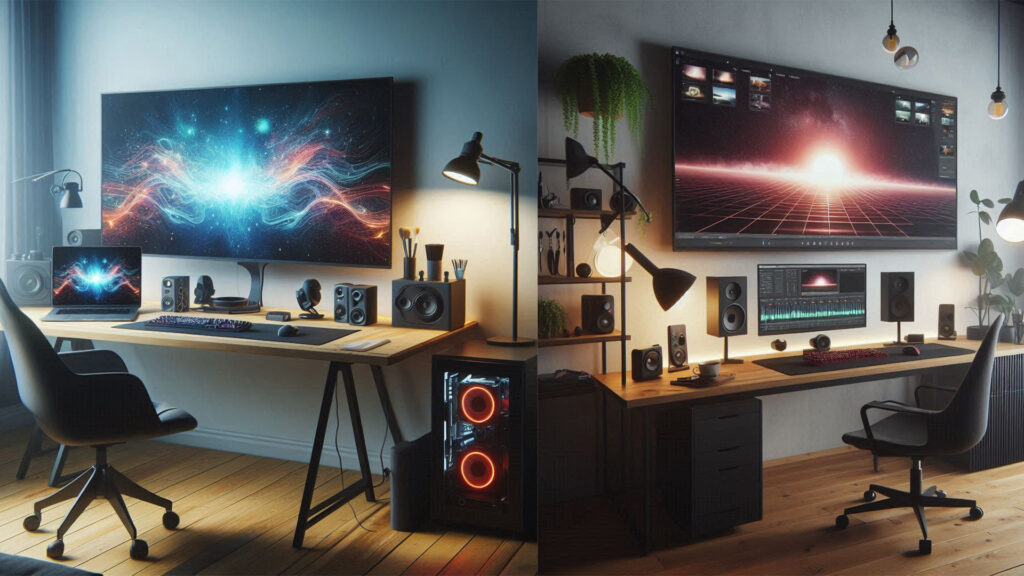
Home Studio vs. Pro Studio: One Smells Like Coffee, the Other Like Confidence
A friend of mine—let’s call him Chad—converted his walk-in closet into a “studio.” He proudly gave me a tour. The tour took 3 seconds. It smelled like old shoes and ambition. He had a green t-shirt thumbtacked to the wall and called it a green screen. His mic? A $9 gaming headset from 2012 with a wire frayed like spaghetti.
But here’s the thing: Chad’s videos were getting views. Why? Because he was relatable. Also, he was unknowingly ASMR-ing every sentence with a creaky chair and a cat that meowed on beat.
Moral of the story: Home studios can work, but only if you’re okay with your production quality occasionally sounding like a phone video shot during an earthquake.
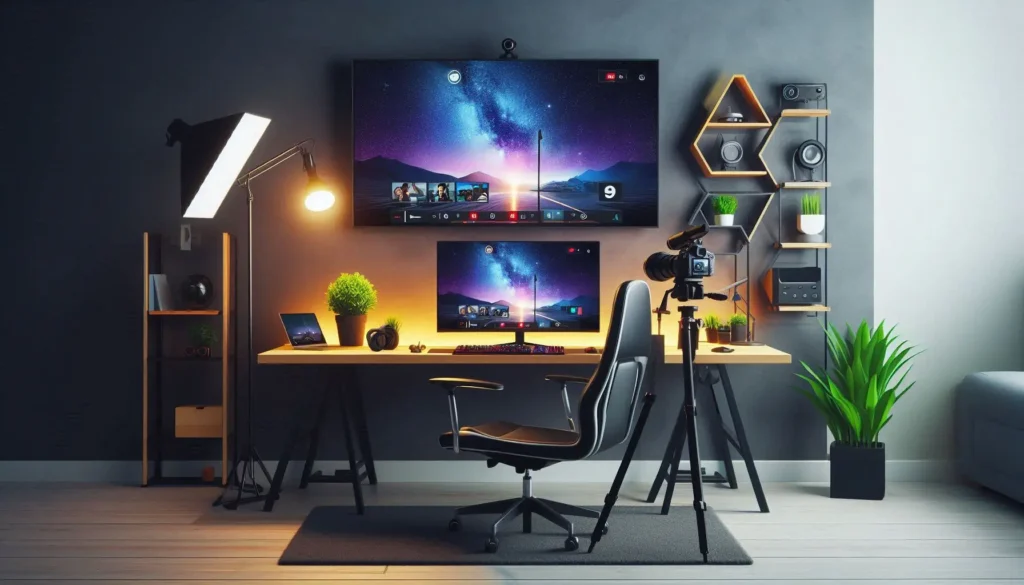
“Then I Stepped Into a Professional Studio and Forgot How to Speak”
The first time I rented a pro studio, I showed up like I was walking into a Marvel movie set. There were lights everywhere. Sound panels. A guy with a clipboard. Another guy with a man bun and an aura of silent judgment.
I stepped in front of the camera and immediately forgot how to form words. It was like my brain went, “Too many lumens! Shut it down!”
Here’s the pro side: No echo. No weird shadows. No accidentally filming your dog humping a pillow in the background. Just clean, crisp visuals that say, “I know what I’m doing,” even if your script was written on a napkin an hour ago.
One client I worked with—a candle brand—filmed the exact same script in a home setup and in a studio. The home version said, “Cute Etsy store.” The studio version said, “Target aisle 3.” Same content, different credibility.
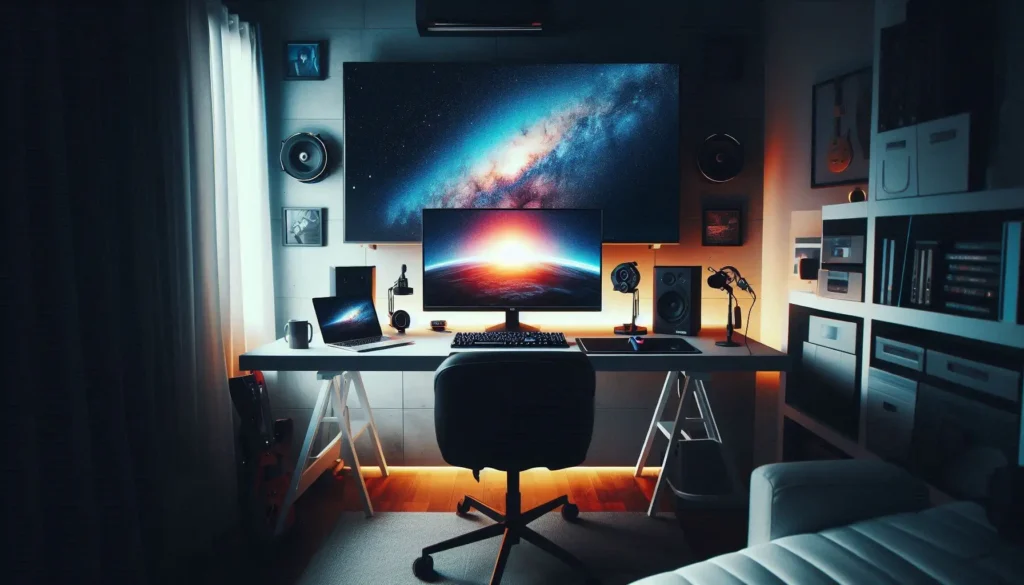
“Home Studio vs. Pro Studio: The Battle of Budget and Brilliance?”
Ah yes, the budget. Or as I like to call it: “The thing that turns dreams into DIY tutorials.”
Let’s be real—professional studios are not free. Renting a professional studio can set you back anywhere from $100 to $500 an hour—basically the price of therapy, but with better lighting and more judgmental gaffers. And that doesn’t include the part where you accidentally knock over a $2,000 light and pretend it wasn’t you.
Meanwhile, a home studio setup can start at $200—total. One softbox, a cheap mic, and a background that doesn’t scream “garage sale,” and you’re golden. Yes, you’ll have to do a little post-production wizardry and maybe tell your kids to stop screaming during your product demo, but hey, it’s affordable!
Pro tip: If your brand sells high-end jewelry, go pro. If your brand sells homemade dog treats in the shape of Nicolas Cage, the home setup adds charm.
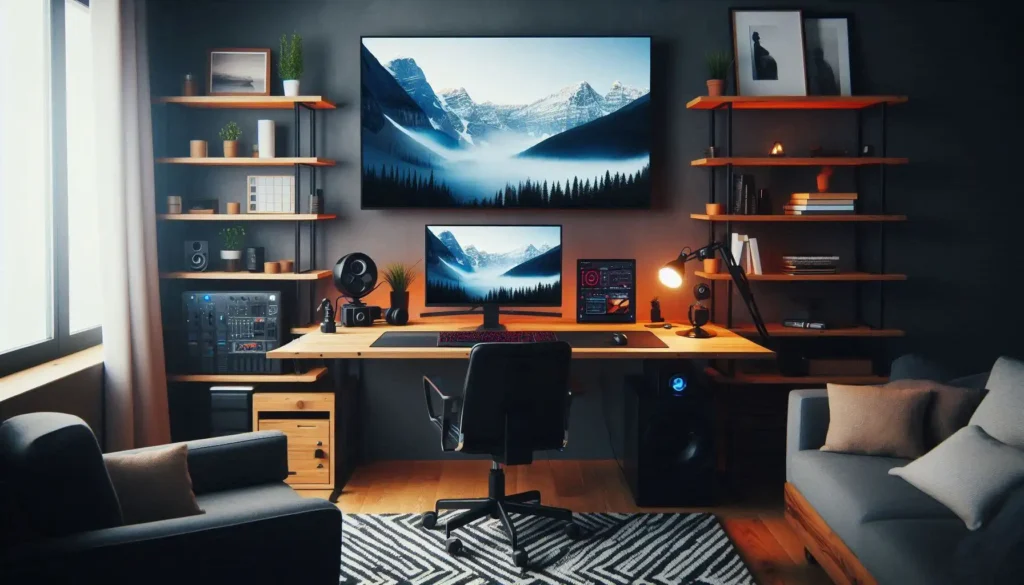
“Performance Anxiety: Home Comfort vs Studio Pressure”
Filming at home feels cozy. You’re in your pajama bottoms, your dog is sleeping at your feet, and your biggest production issue is whether your neighbor’s lawnmower will ruin take 3.
In a studio, you might feel like you’re about to give a TED Talk. There’s pressure. You’re surrounded by equipment you don’t understand, people nodding at you like you’re supposed to know where to stand, and somehow you forgot how to pronounce “hello.”
A client I consulted—an introverted online coach—found home filming so much easier. She could do 12 takes without judgment. In the studio? She blinked weird once and asked to reschedule. Confidence is a performance enhancer, and comfort is key to confidence.
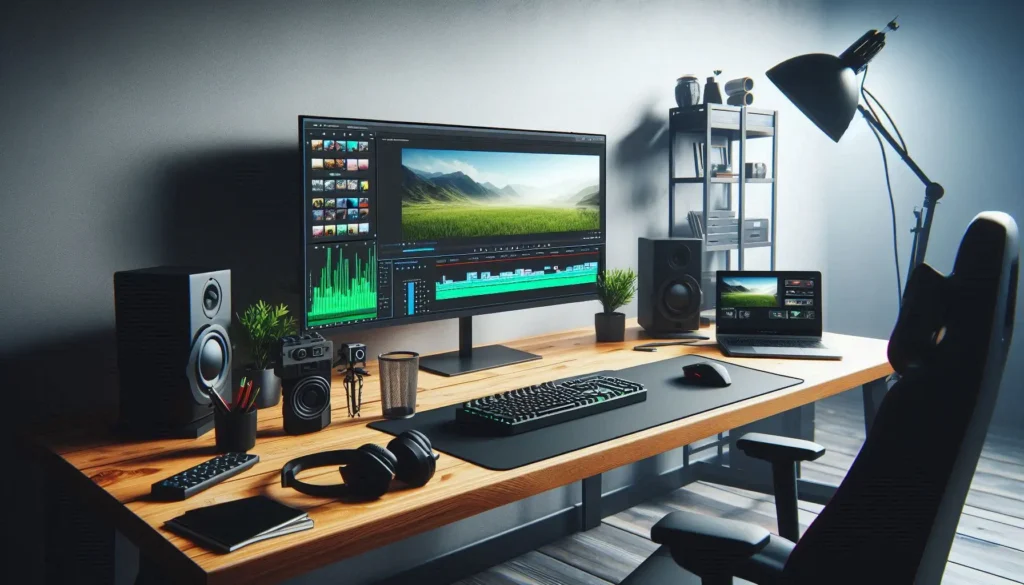
“Editing Nightmares: Fix It in Post… Or Regret Everything”
Let’s not forget the editing struggle. Home setups often come with weird lighting flickers, background hums, and that one shelf that reflects light like a disco ball.
Studio footage? It’s a dream. You drop it into your timeline and it basically edits itself. OK, not really—but at least you’re not syncing three audio tracks because your cat knocked over your mic halfway through.
A YouTuber I know spent 10 hours editing her home-recorded course module to get rid of an echo. She ended up uploading it with the echo and added background music to hide it. Bold move.
“So… What’s Right for You?”
Here’s the final breakdown:
- Home Video Studio = Budget-friendly, cozy, flexible, and great for frequent creators or niche audiences.
- Professional Video Studio = High-quality, polished, impressive, and best for launches, ads, or high-stakes content.
My advice? Start at home. Learn your angles, test your energy, and get comfortable. Then, when you’re ready to level up—or if your dog keeps photobombing your skincare tutorial—rent a studio for those mission-critical shoots.
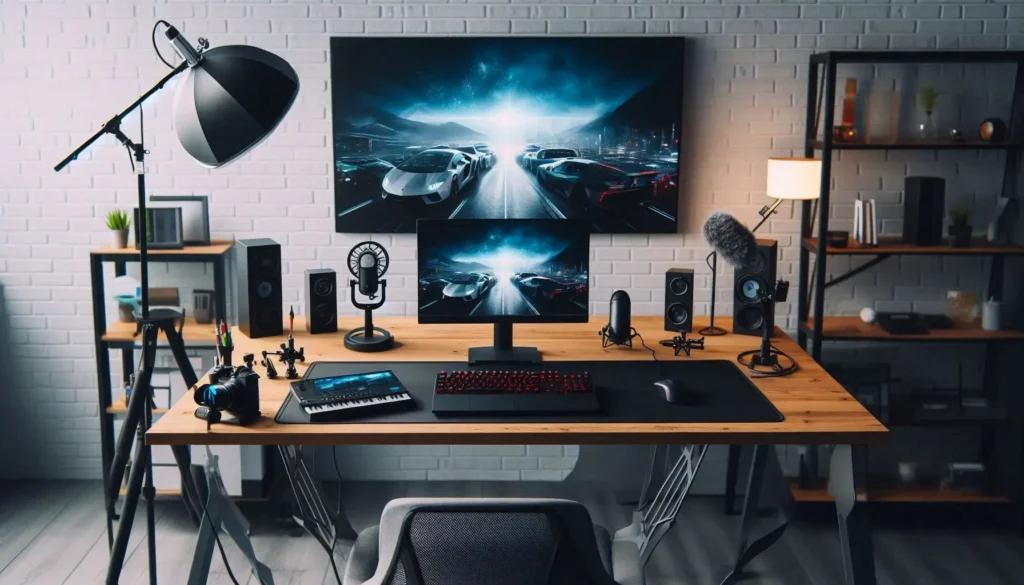
“The Verdict: It’s Not Either/Or—It’s When & Why”
Think of it like cooking. Home video studio is your slow-cooked chili—warm, familiar, and sometimes a little weird. Pro studio? That’s your five-star restaurant plating—expensive, impressive, and great for your brand’s Instagram.
Don’t overthink it. Pick what works right now, and remember: No one ever subscribed to a channel because the lighting was perfect—they subscribed because you were.
Lights, camera, decision time! Our Home Video Studio vs. Professional Video Studio guide reveals which setup fits your content style, without boring you to sleep.
Unless your lighting was perfect. In which case, they probably stayed for that too.
- The Ultimate Guide to Building a Budget Video Studio
- Home vs. Professional Video Studio: What’s Right for You?
- What Every Beginner Should Know Before Setting Up a Video Studio
- How to Create Viral VFX Ads: Exploring the Creative Processes
- Effective 3D Strategies for Video Advertisements with Animation in Action

